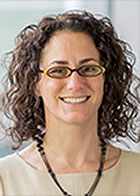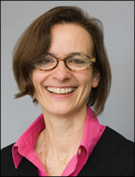Peer Learning: A Cultural Shift
Using errors to create opportunities to learn instead of tracking errors



Read more about peer learning at two institutions and get an overview of peer learning in part one of this story. This is a three-part series on just culture. Read parts one and three.
Integrating All Staff into Peer Learning
Bettina Siewert, MD, associate professor of radiology, Harvard Medical School, Boston, and her colleagues at Beth Israel Deaconess Medical Center, Boston, involve all members of the radiology team in peer learning, including staff on the front lines of patient care.
“It was important to make everyone involved in patient care aware of learning opportunities,” Dr. Siewert said. “Due to the low frequency of errors for an individual staff member, frontline staff are rarely involved in error analysis and discussions, so they often don’t have an opportunity to experience a just culture first hand and have few opportunities to change their beliefs and fears regarding a punitive culture.”
Integrating peer learning into all levels of patient care is therefore important to establish the experience of a just culture throughout the department. This in turn is beneficial for staff engagement in the culture of safety.
“From root cause analysis of serious reportable events, it is known that errors are multifactorial and most often involve systems errors,” Dr. Siewert said. “It is extremely rare that a single person is solely responsible for an error. Inviting conversations among all department members can help everyone become more comfortable voicing concerns, discussing errors and working on system solutions.”
Peer Learning Promotes a Culture of Learning
At Kaiser Permanente the switch from peer review to peer learning was tracked to determine how much of a difference it would make in overall learning by team members.
For almost two years prior to transitioning to peer learning, Dr. Sharpe and his team studied how peer review was working. In that time period, they found that only 72 total discrepancies were entered into the database and on average only five radiologists attended the monthly peer review meeting to identify the final discrepancy category for submissions.
Following the switch to peer learning and for a little over two years after, Dr. Sharpe and his team noted 900 learning opportunities submitted, averaging 36 per month. Attendance at the peer learning conference also increased to 15 radiologists per month.
“When a learning opportunity arises, all of us must accept responsibility for our shared learning and demonstrate a commitment to understanding and improving the care we provide,” Dr. Sharpe said. “Our increased participation after implementing peer learning is evidence that the shared model has engaged the team.”
Peer learning at Kaiser Permanente also includes a monthly general radiology peer learning Self Assessment (SA)-CME online module. This module reinforces the discussions from the in-person conferences and includes 10 to 15 anonymized cases with four to seven self-assessment questions. If completed within two weeks of its availability, radiologists earn 1 SA-CMEcredit.
In the two years following the establishment of peer learning, the mean monthly SA-CME credits earned by radiologists increased from 7.7 credits to 50.6 credits.
“Our group’s peer learning program led radiologists to be more satisfied and engaged, to identify more learning opportunities and to discuss them with more team members, to earn more CME credits, and to implement more practice improvement projects than had occurred when our department was using score-based peer review,” Dr. Sharpe said. “More work is needed to ensure this approach can be successful in different practice environments, in radiology subspecialties and perhaps in other medical specialties.”
A Cultural Shift
Establishing continuous learning that allows for identifying and correcting errors on all levels and improving quality and safety for the benefit patients is the goal of just culture. Peer learning is an important piece of solidifying just culture in a department.
“After transitioning to just culture and peer learning, radiologists now embrace learning opportunities and freely submit them for team discussion and system improvement. Previously, fewer learning opportunities were discussed with the team, which does not tell us that we are making more errors with peer learning, but that prior to peer learning opportunities were passing through our filters and falling into the abyss of our systems,” Dr. Sharpe said. “Traditional peer review can make participants defensive, quiet and disengaged. Instead, radiologists are eager to attend and participate in our peer learning program.”
Dr. Broder agrees and says that healthy skepticism prior to peer learning implementation is common and a good thing.
“There are obviously lots of personal and system-wide barriers that can be challenging to overcome in the move to peer learning, but if an organization believes in just culture, how are they going to show it? Peer learning offers that opportunity,” Dr. Broder said. “Removing the institutional judgment that comes with error reporting can improve the environment and help radiologists learn to make personal changes so that they and their colleagues can do better next time.”
Best Practices for Implementing Peer Learning
• Establish a foundation of just culture.
• Recognize that mistakes are opportunities to learn.
• Create a culture of trust.
• Celebrate excellence.